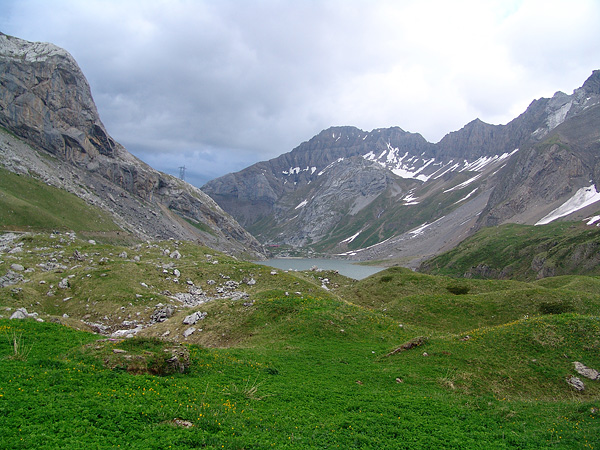Sanetsch pass is located in the western Bernese Alps, but entirely within the canton of Valais. Linking the Diablerets Massif to the west and Wildhorn Massif to the east, it connects the valley of the Morge River to the south and the valley of the Sarine River to the north.
In his novel "The Separation of the Races", the Swiss writer Charles-Ferdinand Ramuz related in 1922 how the people of Valais and Bern used the Sanetsch Pass in the past for smuggling activities, but also to go to "the other side" and steal women and cattle.
Nowadays, it is no longer a north-south passage: in summer, a postal bus connects Sion to the Sanetsch dam and to the small gondola lift connecting Sanetsch to Gsteig above Gstaad, but there is no road between Sanetsch and the Bernese Oberland. Moreover, the road Sion-Sanetsch is only open from June to September.
Sanetsch is situated on the German/French language border and on the Rhone/Rhine water divide: to the north, the rivers flow to the North Sea, and to the south to the Mediterranean Sea.
French name of Sanetsch is Sénin... but even in the francophone Valais it is the German name which is generally used.
From the pass, the Diablerets Glacier (aka Tsanfleuron Glacier) is within sight, and the Sarine spring is nearby. The Sarine (Saane in German) is the famous river flowing across Gruyère and Fribourg into the Aar and the Rhine.
The road does not end at the pass, it goes on and descends to a lake and a dam, near the Sanetsch Inn. You should definitely have a drink or a meal in this nice restaurant: you'll have an opportunity to visit a very unusual museum, dedicated to the life in Valais during the past centuries. A maze of small rooms cluttered with countless objects and tools, often strange, sometimes moving, always authentic...
Useful links
Swiss Canton of
Valais -
Wikipedia









